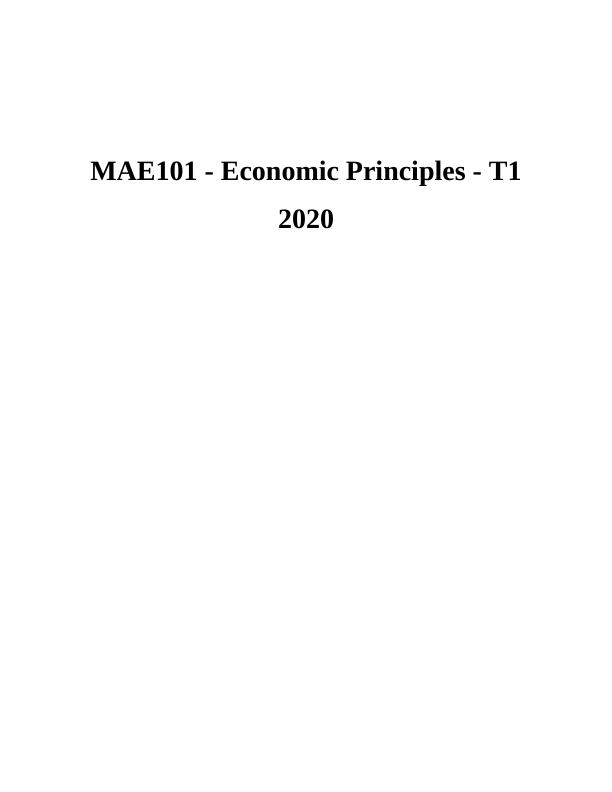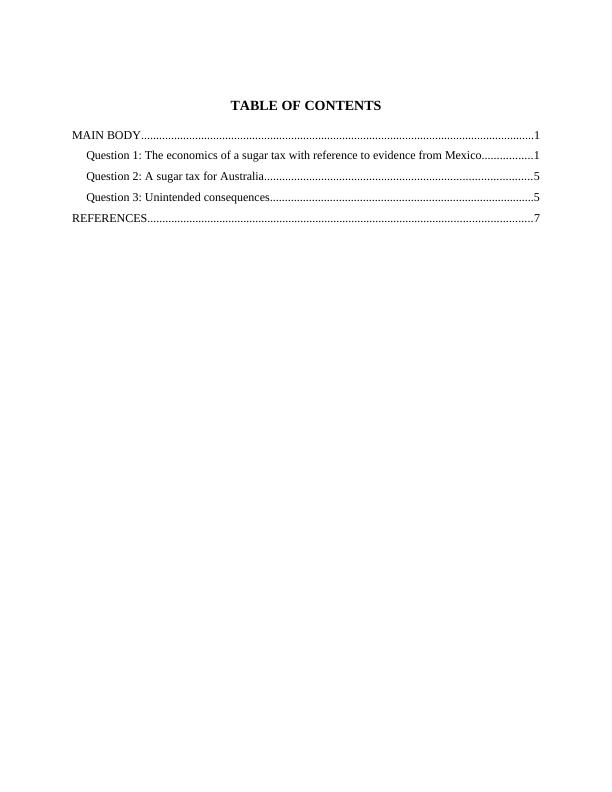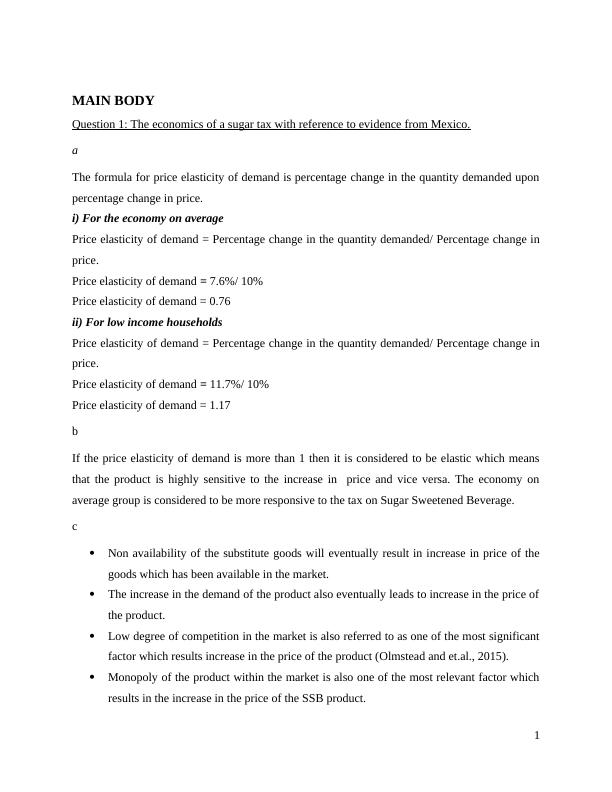The Economics of a Sugar Tax with Reference to Evidence from Mexico
Submit a PDF document with digitally generated content, addressing key microeconomic concepts, economic tools in a digital format, and real-world issues. Word limit: 2000 words.
9 Pages1575 Words75 Views
Added on 2023-01-11
About This Document
This article discusses the economics of a sugar tax with reference to evidence from Mexico, including price elasticity of demand and unintended consequences. It also explores the potential implementation of a sugar tax in Australia.
The Economics of a Sugar Tax with Reference to Evidence from Mexico
Submit a PDF document with digitally generated content, addressing key microeconomic concepts, economic tools in a digital format, and real-world issues. Word limit: 2000 words.
Added on 2023-01-11
ShareRelated Documents
End of preview
Want to access all the pages? Upload your documents or become a member.
Question on the Economics 2022
|10
|984
|14
Sugar Tax In Australia Question and Answer 2022
|15
|2746
|27
Sugar Tax In Australia Question and Answers 2022
|14
|2933
|31
Impact of Tax on Sugar Sweetened Beverages (SSB’s) on Consumer Choices
|4
|761
|252
Price Elasticity of Soft Drinks, Tobacco Products, and Gasoline
|12
|2660
|81
Types of Demand Elasticity in Managerial Economics
|14
|3439
|60



